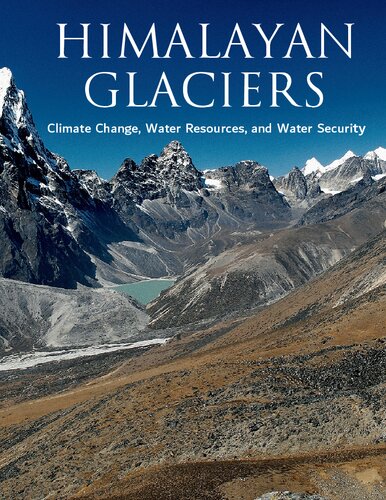Product desciption
Himalayan Glaciers Climate Change Water Resources And Water Security National Research Council by National Research Council 9780309260985, 0309260981 instant download after payment.
Scientific evidence shows that most glaciers in South Asia's Hindu Kush Himalayan region are retreating, but the consequences for the region's water supply are unclear, this report finds. The Hindu Kush Himalayan region is the location of several of Asia's great river systems, which provide water for drinking, irrigation, and other uses for about 1.5 billion people. Recent studies show that at lower elevations, glacial retreat is unlikely to cause significant changes in water availability over the next several decades, but other factors, including groundwater depletion and increasing human water use, could have a greater impact. Higher elevation areas could experience altered water flow in some river basins if current rates of glacial retreat continue, but shifts in the location, intensity, and variability of rain and snow due to climate change will likely have a greater impact on regional water supplies.
Himalayan Glaciers: Climate Change, Water Resources, and Water Security makes recommendations and sets guidelines for the future of climate change and water security in the Himalayan Region. This report emphasizes that social changes, such as changing patterns of water use and water management decisions, are likely to have at least as much of an impact on water demand as environmental factors do on water supply. Water scarcity will likely affect the rural and urban poor most severely, as these groups have the least capacity to move to new locations as needed. It is predicted that the region will become increasingly urbanized as cities expand to absorb migrants in search of economic opportunities. As living standards and populations rise, water use will likely increase-for example, as more people have diets rich in meat, more water will be needed for agricultural use. The effects of future climate change could further exacerbate water stress.
Himalayan Glaciers: Climate Change, Water Resources, and Water Security explains that changes in the availability of water resources could play an increasing role in political tensions, especially if existing water management institutions do not better account for the social, economic, and ecological complexities of the region. To effectively respond to the effects of climate change, water management systems will need to take into account the social, economic, and ecological complexities of the region. This means it will be important to expand research and monitoring programs to gather more detailed, consistent, and accurate data on demographics, water supply, demand, and scarcity.
Contributor(s): National Research Council; Division on Earth and Life Studies; Division of Behavioral and Social Sciences and Education; Board on Atmospheric Studies and Climate; Water Science and Technology Board; Committee on Population; Committee on Himalayan Glaciers, Hydrology, Climate Change, and Implications for Water Security.


